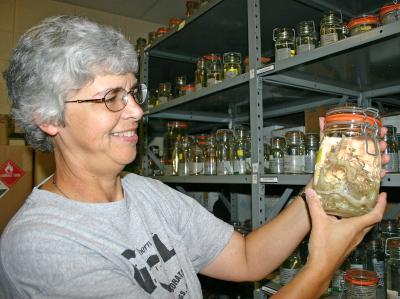Gulf Coast Research Lab Museum Receives National Science Foundation Grant
Wed, 09/08/2010 - 01:54pm | By: Martha Duvall

The University of Southern Mississippi's Gulf Coast Research Laboratory Natural History Museum has received a National Science Foundation grant to catalogue invertebrate specimens from the northern Gulf of Mexico.
The grant supports the processing of beach and grassbed samples of shoreline invertebrates collected in May within the Gulf Islands National Seashore in both Mississippi and Florida. These samples represent vital baseline data from sites potentially affected by the Deepwater Horizon oil spill.
“GCRL's collection holds samples and historical data from sites potentially impacted by the Deepwater Horizon oil spill,” explained Sara LeCroy, museum curator. “In addition, we're a repository for several thousand northern Gulf plankton samples collected by the National Marine Fisheries Service, which is a part of theNational Oceanic and Atmospheric Administration(NOAA), beginning in the 1980s.”
The research museum houses one of the most important regional collections of fishes in North America with more than 355,000 specimens in 36,000 lots (jars). It contains one of the best collections of pipefishes and seahorses in the world.
“At this point, our invertebrate collection is smaller than the fish collection and consists of approximately 3,000 catalogued lots,” said LeCroy. “We also have a large number of uncatalogued lots from the northern Gulf. This grant will allow us to catalogue them and make the associated data available worldwide via the Internet.”
LeCroy became museum curator in 2000, after working in the lab's Invertebrate Zoology section for eleven years. Under her leadership, GCRL's museum has increased its invertebrate holdings, while simultaneously maintaining and improving the fish collection. She is an expert in marine crustacean taxonomy, and serves as one of ten researchers involved in GCRL's Coastal Ecosystems Group.
Museum specimens are available for loan to researchers from qualified institutions worldwide and can provide essential information on biodiversity, systematics, morphology, ecology, distribution and life history of the species. Data from the fish collection is currently available online at http://www.usm.edu/gcrl/museum.
The current NSF grant is the third received by the museum and the first to support the enhancement of the invertebrate collection. It will involve the participation of four senior researchers, two graduate students and two undergraduates.